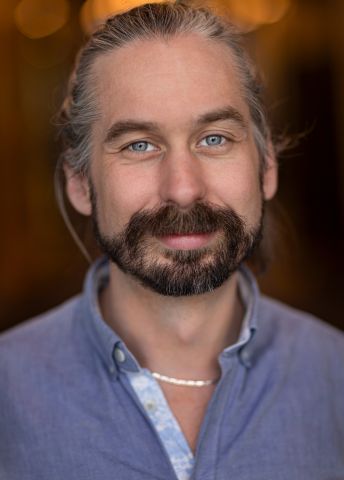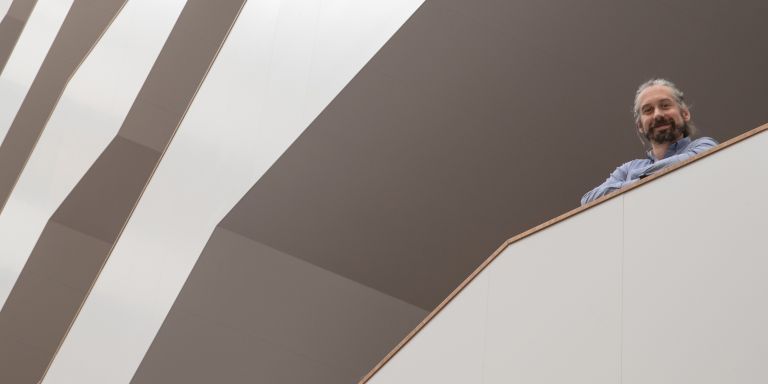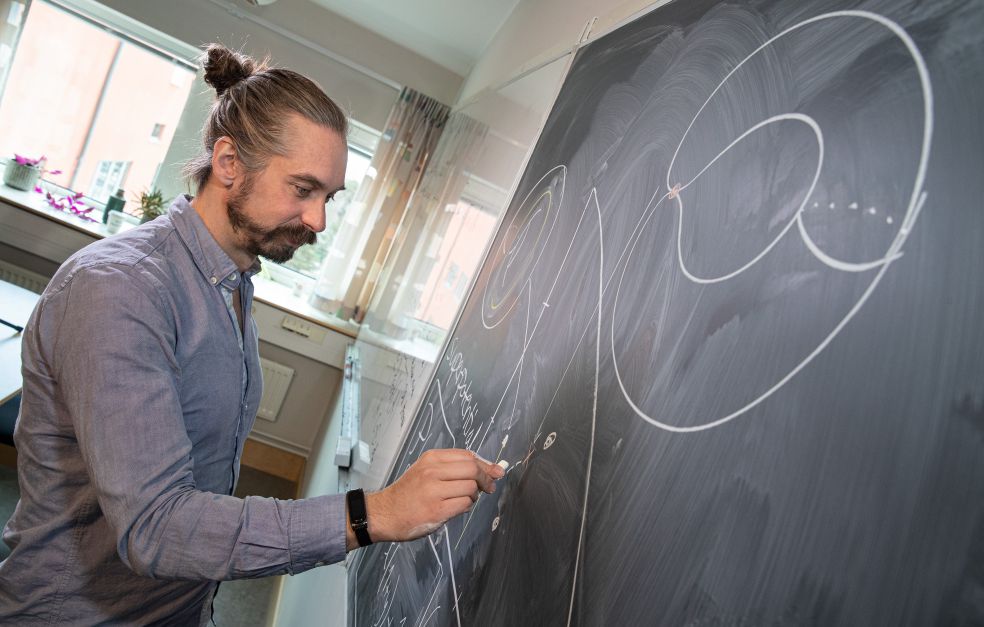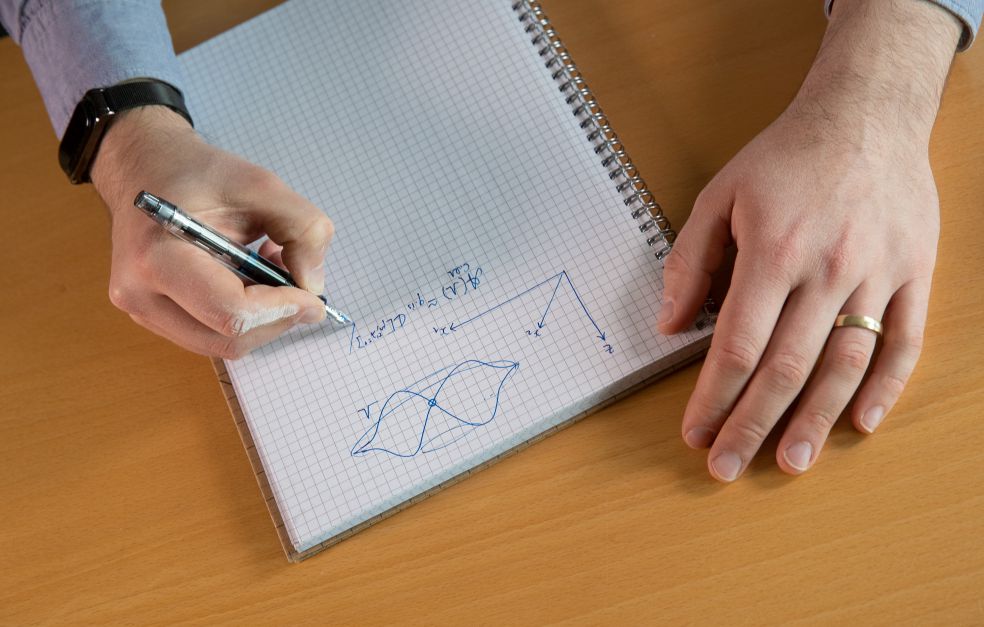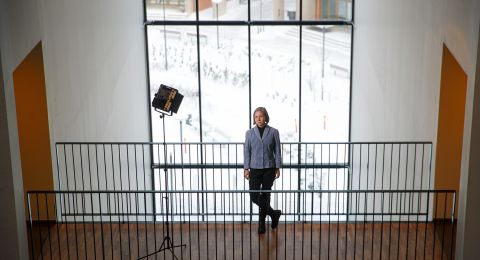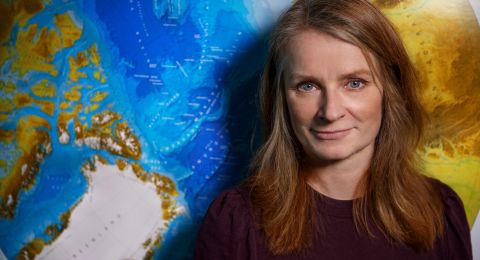Geometry is the science of spaces and objects therein. Symplectic geometry describes not only the position of objects, but also their velocity. Wallenberg Scholar Georgios Dimitroglou Rizell is studying symplectic spaces and the mathematical knots that can occur there.
Georgios Dimitroglou Rizell
Associate professor in Mathematics
Wallenberg Academy Fellow/Wallenberg Scholar
Institution:
Uppsala University
Research field:
Symplectic geometry/topology and contact topology
Isaac Newton laid the foundations of classical physics in the 18th century. The following century his equations were reformulated by astronomist and mathematician William Rowan Hamilton in a way rendering them easier to solve.
“Symplectic geometry represents the spaces where these equations live. It’s not about the space in which particles or planets exist – it’s a geometry that goes beyond that. If you specify a point in symplectic space, you determine both the its velocity and the its position,” Dimitroglou Rizell explains.
Those who understand these spaces can see how the geometry itself creates certain conditions, such as planetary orbits – although these are not something Dimitroglou Rizell himself is studying. He is a mathematician at Uppsala University. The work he is doing can be applied to certain analyses of planetary systems or biological structures, such as DNA helixes and RNA. But his goal is to study the spaces themselves and understand their properties.
Mathematical knots – key to understanding
During his time as a Wallenberg Academy Fellow he studied structures in symplectic space that are called knots. Just as the space is not a conventional three-dimensional space, these knots are not ordinary knots. They may, for example, be tied surfaces in a four-dimensional space. Understanding how the knots behave has been recognized as fundamental to understanding the space around them.
“I believe that understanding will contribute to progress in many other fields. But essentially I am a pure mathematician – I’m driven by a desire to understand interesting problems.”
Symplectic geometry is a fairly new field. It has been studied for about 30 years, but it is related to many other mathematical subjects, such as classical geometry, dynamic systems and algebra. And the tools used to study symplectic space are closely related to string theory in theoretical physics.
“There seems to be a bit of hype surrounding the field. It feels like we’re in the middle of it and are doing something that is of importance for people working in many other disciplines.”
“Being chosen as a Wallenberg Scholar – it doesn’t get any better than that. It’s very gratifying to be appreciated for the work I do. Also – the grant is generous. It gives me the resources I need.”
Proof requires pen and paper
Dimitroglou Rizell often works alone, but has a couple of colleagues with whom he discusses ideas. During the coronavirus pandemic he took part in numerous Zoom meetings, using an electronic whiteboard to show the other participants his ideas. But he does not use mathematics software. Since his research is based on theoretical reasoning, he needs to arrive at certain arguments in order to prove that a given property holds. It does not usually involve making a calculation to arrive at some specific number. He elaborates:
“I’ve never really used any powerful computer tools. I use pen and paper to visualize the arguments. Even though my research is confined to ideal mathematical objects, they can often be treated almost as though they were real-world objects. I understand them by turning them upside down and inside out, viewing them from different angles and subjecting them to thought experiments.”
Dimitroglou Rizell is used to people struggling to understand what he does. Sometimes even he thinks it is hard to find the arguments he needs.
“It sometimes happens that you’re sure you’re right, but you can’t find the proof. That’s the tricky thing about mathematics, but also what makes it so fascinating. People sometimes ponder a problem for a hundred years without success. You’d have to feel pretty cocky if you were the one who finally solved it…”
The joys of absolutes
Math came easy to him even in grade school, but it was in high school that his interest really blossomed. He found it very satisfying that mathematics never simply accepted something – every argument was analyzed in depth.
“Mathematics was so categorical. No ‘truth with modification’ or ‘it works in practice’. And I also liked the way you make progress by virtue of your own mental powers.”
He became a researcher mostly by chance. He was offered a PhD position and discovered he had a facility for the work. He confesses that at the time he was not actually clear about what research involves – how much time, effort and passion is required.
“I’m much more aware of it now, and have reflected over it in my role as head of the mathematics department. Students on the undergraduate program are still quite a long way away from research. We need to show young people what the research role entails. I think there is room for improvement there.”
Text Lisa Kirsebom
Translation Maxwell Arding
Photo Magnus Bergström
